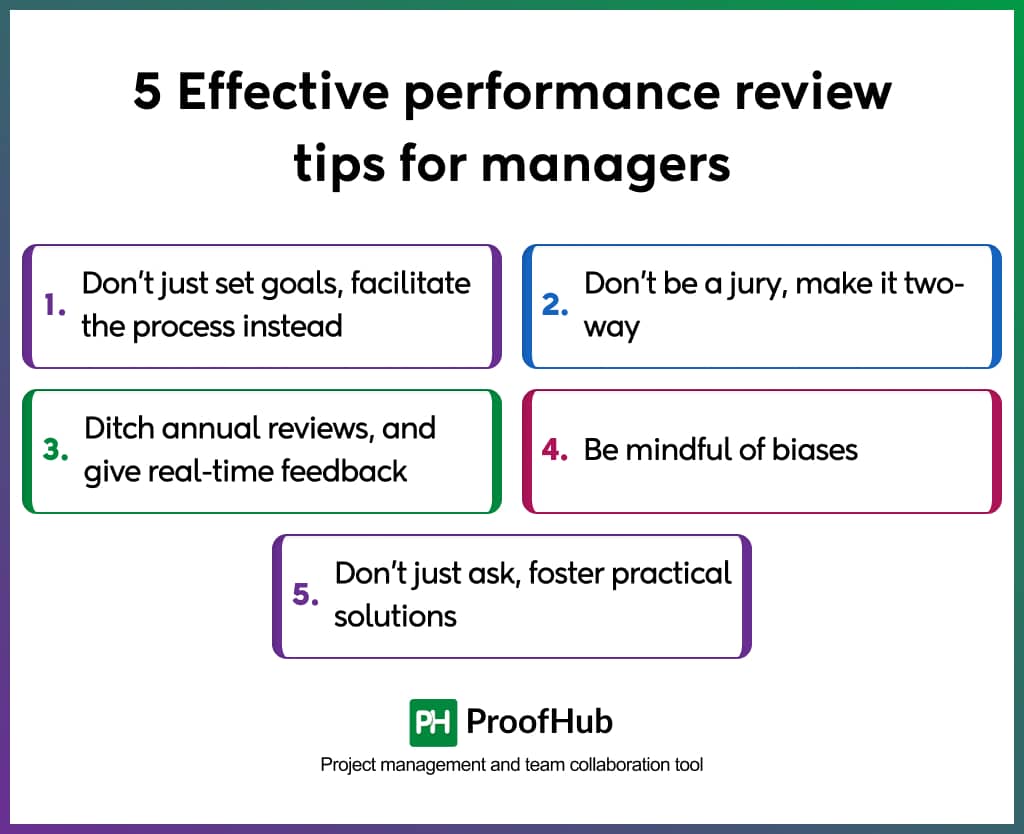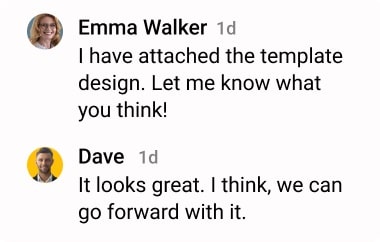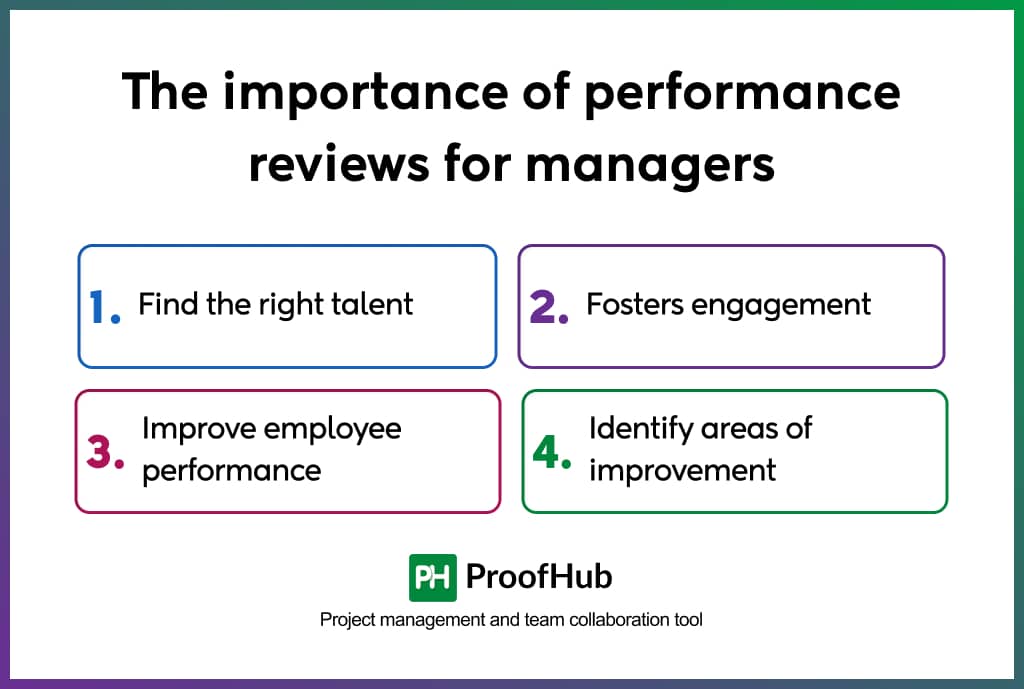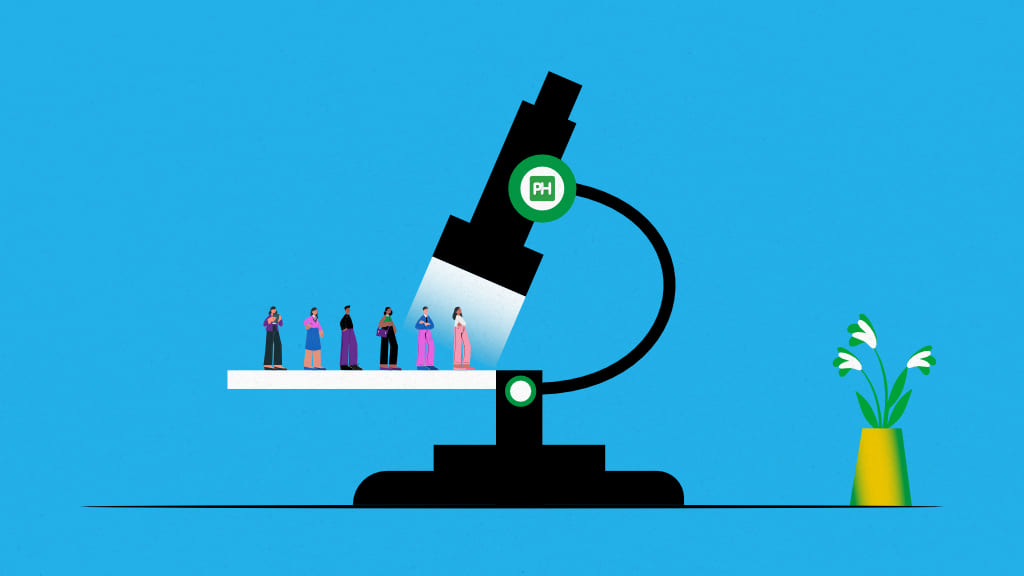Performance reviews for managers can be a daunting task, leaving you feeling overwhelmed and anxious as you are constantly judged and held accountable for your team’s performance.
Do you ever find yourself dreading performance reviews, unsure of how to make them truly impactful?
Are you searching for proven strategies that will revolutionize your approach as a manager?
If your answer is a resounding “yes,” then you’re in the right place!
As a manager with over 15 years of experience, I’ve seen my fair share of performance reviews. Some have been great, some have been…not so great. But one thing I’ve learned is that there are a few key things that can make a performance review truly effective.
From setting clear expectations to fostering open communication, each tip is designed to help you navigate the review process with confidence. You’ll discover techniques to effectively deliver feedback, provide meaningful goals, and establish a supportive environment that encourages growth and development.
However, you find yourself facing a common challenge – how to strike the right balance between motivating your employees and addressing areas for improvement.
Well, fear not! I’ve been in your shoes for years, and today, I’m thrilled to share with you the top 5 proven performance review tips that have worked wonders for me and countless other managers.
So, whether you’re a seasoned manager seeking to enhance your review process or a budding leader looking to build a solid foundation, this article is your ultimate guide.
Get ready to unlock the secrets of impactful performance reviews and witness the remarkable transformation that awaits both you and your team.
What is a performance review?
A performance review is an official evaluation where a manager or supervisor analyzes the work performance of employees, including their strengths and weaknesses, provides feedback, and sets further goals for improving individual as well as organizational performance.
The basic performance review involves 5 steps:
➡️ Setting goals – Identification of needed goals that employees had to cover and will cover in the coming time.
➡️ Review of strengths and weaknesses – Evaluation of strengths and weaknesses to tell employees where they can improve and where they can use their forte.
➡️ Rate the performance – Giving employees a rank or grade based on their performance.
➡️ Giving feedback – Giving the overall observation that you noticed in your teams’ work, from where they did best to where they can do better.
➡️ Rewards and recognition – Recognition of employees’ efforts and reward them accordingly to encourage them with more enthusiasm.

These are the basic steps through which the performance review is conducted. But, have you ever questioned the efficacy of the standard performance reviews?
I recall a moment when I was trying to find ways to improve the performance evaluation procedure.
It all started to make sense after I discovered the “psychology of performance reviews and appraisals”. I found that when performance reviews are done in a specific manner, it actually proves to be effective.
Simply put, you need to rethink your approach to conducting performance reviews.
Now let’s talk about the most important question: when and how to do performance reviews. I’ll share some useful tips that I’ve used and they’ve worked really well for me. I believe they can help you too.
5 Effective performance review tips for managers

When you conduct a review, you are doing so for the benefit of your employees. But what if they aren’t happy with it?
There may be some gaps in the performance review structure that you are overlooking.
✊You need to close these gaps.
Here are some performance review tips for employers that can help you conduct an effective and practical performance review. Let’s look at it:
1. Don’t just set goals, facilitate the process instead
According to one of the OPM US Office of Personnel Management surveys, “Nearly half of the 2,000 employees surveyed in the survey stated their performance had occasionally been evaluated against unspoken objectives.”
Not only this, but managers also have some points that came out during the survey:
“Although 82% of managers believe they communicate clear goals to their employees prior to their official performance review, just 46% of employees agree.”
These mislinks reflect poor communication between the supervisor and the employee.
“When most people hear the words ’employee development,’ they think of traditional classroom training,” said Michael Simpson, Senior Consultant in Organization Practice at Watson Wyatt Worldwide in San Francisco. But that’s an overly narrow perspective.
Hence, defining goals shouldn’t be the only strategy; as a leader, you also need to understand that you need to help your team members achieve those goals.
As a leader:
➡️ Provide your employees with coaching, offer engaging assignments, and recognize areas for improvement to ensure the greatest employee development.
➡️ Assist them in improving their performance.
➡️ Ensure they have the necessary resources to accomplish organizational goals.
2. Don’t be a jury, make it two-way
Personally, I believe it’s essential to create a two-way performance evaluation.
I always implement this strategy while doing such reviews. I encourage the employee to write down a self-review, in which they can reflect on their performance, prior to the meeting.
👉 Do you know what impact it has on the final performance review results?
When both you and your employees equally participate in the process, the emphasis switches from evaluating the employee individually to a collaborative effort to track overall job performance.
👉 Implementing a two-way performance review allows employees to actively participate in the evaluation process.
👉 This gives them a sense of ownership and commitment to their performance.
👉 They can provide insights into their accomplishments, issues, and areas where they may need assistance or development.
This method promotes a collaborative and growth-oriented performance review session.
3. Ditch annual reviews, and give real-time feedback
The main purpose of a performance review is to improve the work efficiency of the employees.
To accomplish this goal, building an efficient real-time framework for assisting conversations that your team members appreciate, find beneficial, and value is essential.
👉 It is critical to have a simple and user-friendly system that encourages continuous, two-way communication between you and your employees throughout the year.
With ProofHub, You can provide real-time feedback directly on tasks or files with the commenting feature, making sure your communication is timely and on point.

Plus, the @mention functionality ensures that your team members are notified about the feedback, keeping everyone engaged in the conversation.

An annual performance evaluation is insufficient on its own.
Employees require regular feedback in order to recognize their strengths and opportunities for development.
4. Be mindful of biases
When it comes to performance reviews, objectivity is key. We want to ensure fairness, clarity, and an unbiased assessment of team members’ performance.
According to a recent survey conducted by Reflektive, the impact of inaccurate performance reviews on employee retention rates is significant. The study revealed that a staggering 85% of full-time U.S. workers surveyed would consider leaving their company if they received an unfair or inaccurate performance review.
These findings emphasize the critical importance of conducting fair and accurate performance reviews to retain valuable talent within organizations.
Here are some tips to minimize bias in employee performance reviews
- Take the long view: Consider the entire review cycle, avoiding recency bias by looking beyond recent achievements.
- Watch for unconscious bias: Be aware of personal influences and evaluate employees based on their own merits.
- Quality over quantity: Assess work based on effort and quality, not just quantity or outcomes.
- Individual evaluation: Avoid comparing employees; evaluate each based on their unique strengths and development areas.
- Separate personal feelings: Keep personal views separate from evaluations; focus on career growth and skills.
5. Don’t just ask, foster practical solutions
People do not underperform for no cause.
There are always causes, but you won’t know what they are unless you make the evaluation process one of give and take.
Assist and coach! If an employee is underperforming, ask the right questions to identify the problem.
But the final question is, “What next?”
What measures should the employee take that target the area for improvement?
And what kind of help can you do to make it happen?
Once you’ve determined the root causes of the employee’s poor performance, you must design a customized action plan. This plan should detail the specific actions, resources, and assistance that the employee will require to address the problems and attain their goals.
The five performance review tips described above, in my opinion, considerably impact the success of a performance review: It is essential to do these assessments on a regular basis, and it is best to follow a clear and simple plan if you intend to do so on a weekly, monthly, or quarterly basis.
This plan should define what questions to ask, how to communicate effectively, and how to set up a reward system. You can improve the effectiveness of your performance reviews by integrating these factors.
Here is the structure I use while conducting a performance review. Let us have a look.
How to do a performance review? 5 Steps

From planning for a performance review to implementing a reward system, let’s take a look at how you can create a successful review that motivates your employees to work better and smarter.
👉 Prepare in advance
You must collect data on employee performance in order to prepare for a performance evaluation:
- Make a list of the employee’s objectives for a specific time period.
- Seek out employees’ outputs to acquire a broader understanding of their performance.
- Keep track of employees’ performance in real-time with a shared working platform where everyone can view the status of work in one spot.
- Make a list of the employee’s accomplishments and good contributions.
- Examine their skill development and work-related behavior.
Find out the answers to these questions and engage in a two-way conversation.
👉 Set the right goals
Setting meaningful goals for performance evaluations on a regular basis is critical to optimize the productivity of their teams.
For this, I prefer to use a methodical approach to goal-setting that matches with the organization’s objectives and encourages employee growth, whether it is done weekly, monthly, or quarterly.
- To begin, you can sit and work with each team member to learn their strengths, areas for improvement, and career goals.
- Based on this discussion, specific, measurable, attainable, relevant, and time-bound (SMART) goals, define the roles of every employee.
- Make sure that these objectives are intended to push employees, foster skill development, and boost overall success.
- Don’t forget to provide regular feedback, support, and resources to help their team members achieve these goals during the review period.
👉 Communicate openly
Creating a productive workplace that promotes open communication, constructive feedback, and ultimately aids employees in realizing their full potential is crucial. You must also pay attention to how you initiate and conduct conversations with the employees as well as how at ease they are while doing so.
- Foster a pleasant atmosphere at the performance review to guarantee that employees feel comfortable sharing their opinions and concerns.
- Use language that is uplifting and constructive. Do not speak in a rude or unmotivating manner that could demoralize the employee.
- Practice active listening and pay attention to what the employee is saying, ask pertinent questions to clarify, and invite them to offer their opinion.
- Be conscious of any unconscious biases that could impact your decisions and work to overcome them.
Check out our list of the 13 best internal communication tools that will revolutionize the way your team works together.
👉 Provide continuous feedback and coaching
Once you have done the evaluation, now what is the next step?
It is essential to keep “continuous feedback” and check with employees on work, as it will help you to provide necessary guidance whenever they need it.
But how to do so?
ProofHub can help you and your team in keeping a regular check on performance.
🌟 You and your team members will be able to communicate and share comments in real-time. ProofHub streamlines the entire feedback process, ensuring that performance talks are fruitful and significant, with features like task management and proofing.
🌟 Not only that, but by fostering continuous communication and cooperation through discussions, chats, and working on transparent workflows, you can address concerns, establish goals, and quickly make adjustments to your pre-defined goals, ultimately leading to improved performance and growth.
👉 Establish a reward system
A performance reward system recognizes employees’ efforts.
Once you have received feedback from the team, you should begin developing a plan for how you can better reward your employees.
Give rewards to both teams and individuals.
🌟Group awards encourage everyone to work together as a team, but they don’t distinguish between excellent members and those that simply coast.
🌟Choose whether you want to give them rewards or appreciation awards. You can, for example, offer them a lunch party, grant them authority to operate more independently or give them bonuses or incentives.
Follow these five points while creating a performance review for an employee. This will definitely help you and your team mutually define a goal to work towards.
✨Pro Tip: Conclude the performance review on a positive note
As you wrap up the performance review, it is crucial to foster mutual understanding and respect. Your goal is to ensure that your employees leave the meeting with clarity and a sense of direction.
Instead of leaving them in the dark, provide them with attainable business objectives, a hopeful perspective, and a well-defined employee performance plan for the future.
By offering encouragement and expressing appreciation, you can elevate a positive review and uplift your employees’ morale, even after a less favorable evaluation.
Incorporating positive reinforcement and providing constructive professional feedback can instill confidence and motivation in your workers, empowering them to perform at their best.
The importance of performance reviews for managers

Just as we keep a regular check on our health, mental well-being, and even simple goals like vehicle upkeep, we should keep a regular check on our work performance.
Managers conduct performance reviews to learn how they can enhance their strategy, increase internal communication, and advise their team on how to work together to bring the best to the table.
Using such performance reviews, managers get help in –
✌️ Find the right talent
With such reviews, you are able to get insight into how your employees are progressing in terms of skill development, knowledge, and involvement with the company’s goal. Further, you are also able to know employees’ particular talents, and the areas in which they can lead, and help the organization to grow.
✌️ Fosters engagement
According to a survey conducted by SHRM, “the employee response to the real-time feedback culture is highly positive.”
Regular performance reviews enable managers and employees to communicate in a two-way. Managers can offer constructive comments, handle concerns, and provide direction. This conversation builds trust and engagement among the team.
✌️ Improve employee performance
“We all need people who will give us feedback. That’s how we improve.” — Bill Gates.
A survey conducted by SHRM also repeated constructive feedback improves the performance or behaviors as compared to negative feedback.
So, managers can use performance reviews to resolve any performance concerns that arise. They can provide direction, establish clear standards, and create action plans to assist people in improving their performance, eventually benefiting both the person and the team.
✌️ Identify areas of improvement
An effective performance review assists employees in identifying areas for growth and improvements while preserving strong company relationships.
What is the best part about these performance reviews?
These are not only valuable for managers or leaders, but also provide a wonderful advantage to employees, as they can learn about their “strong points” and “parts that require improvement.” They can better manage their workload and keep on top of things.
Conclusion
The overall performance reviews for managers are an essential process for assessing employees’ performance, providing feedback, and encouraging growth.
It underlines the value of open communication and encourages honest feedback to improve performance.
As an all-in-one project management and team collaboration software, ProofHub provides you with the platform to maintain transparency and good communication in performance reviews.
Why not start with a shared all-in-one application to expedite not only your performance evaluation but also your whole work management and team communication?
Take the first step towards a more organized and stress-free work life—explore ProofHub Today!
FAQs about performance review
How often should performance reviews be conducted?
Annual reviews are a traditional evaluation of performance reviews, but it is also essential to give feedback from time to time for a better understanding of work and attaining goals.
What should managers do if an employee becomes defensive during a performance review?
Empathy and active listening should be used by managers to address defensiveness.
How can managers effectively motivate employees during performance discussions?
Managers can encourage staff at performance reviews by providing constructive criticism and acknowledgment, defining clear goals, and providing possibilities for advancement.
Are there any legal considerations when conducting performance reviews?
Yes, legal considerations include maintaining objectivity, avoiding discriminatory practices, and protecting employee information confidentially.
What should a manager do if an employee disputes the feedback provided during the review?
If an employee disagrees with the given feedback, the manager should encourage open communication, listen to the employee’s point of view, and seek for a fair settlement.

